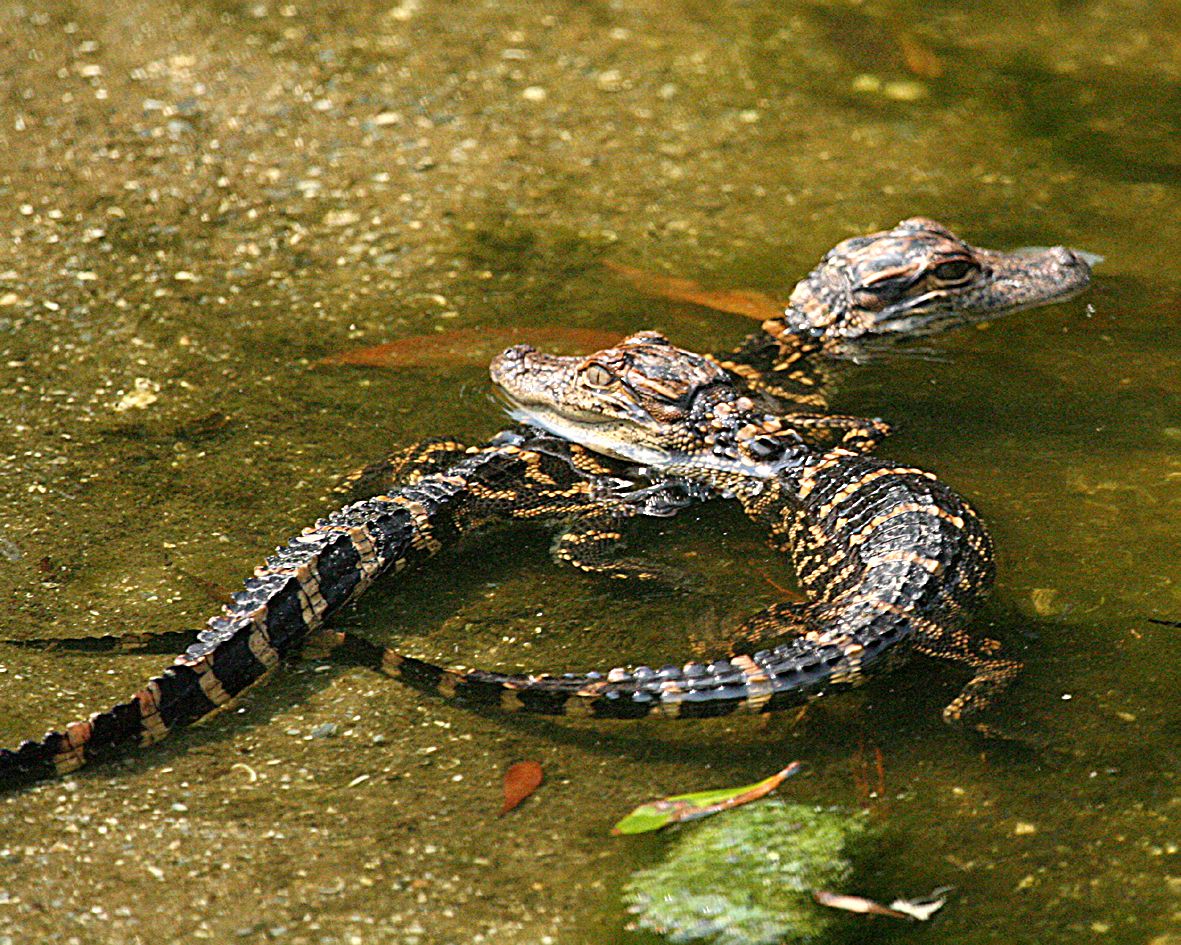Living with Wildlife
The American alligator is one of the most spectacular animals in the southeastern United States. Once a federally endangered species, alligators have recovered. They are present in essentially all freshwater bodies in the Southeast as well as saltwater marshes.
The basic body of the alligator has not changed since the time of the dinosaurs. Males can grow to 10-11′ (250-350 lb) and females grow to 7-8′ (100-150 lb). In the wild, alligators may live more than 40 years. Alligators move among ponds and into the surrounding salt marshes, creeks and rivers. The range of adult males can exceed 2,000 acres and individuals occasionally travel many miles in search of mates and food.
Learn More About Alligators on Coastal Kingdom
Hatchlings and young alligators eat small fish, amphibians, insects, snails and crustaceans. Large ones feed on fish, turtles, snakes, birds and mammals. Alligators are often seen in the marsh or in saltwater ponds because blue crabs and mullet are among their favorite foods. Alligators are ectothermic (cold-blooded) and their feeding activity is dependent on body temperature.
Alligators are typically inactive during the winter months and are rarely seen except on warm winter days when they may come out to bask in the sun. Alligators seek refuge in dens, often constructed under pond banks.
During their courtship and mating season (April and May), males often bellow to attract females and warn off competing males. In June and July females lay 20-60 eggs in a nest constructed from leaf litter, vegetation and mud. Hatchlings emerge from the eggs in two months. Females protect their babies from predators such as wading birds, turtles, large fish and people for up to a year and a half. Hatchlings stay together in a pod for up to three years.
Children should never be allowed to fish without supervision. Pets should be kept away from pond edges and out of ponds altogether. Click here to see more alligator safety tips.

Copyright © Spring Island Trust
40 Mobley Oaks Ln. · Okatie, SC 29909 · 843-987-7008
Site by Sans Sheriff Studio

